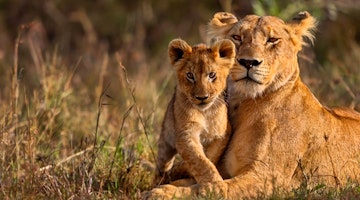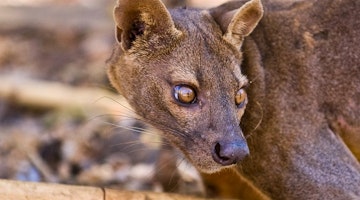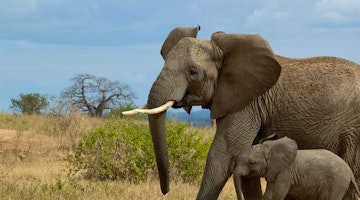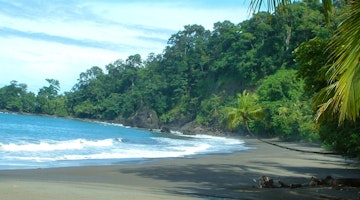The Menabe Antimena Protected Area is famed for its gigantic Grandidier’s baobabs – as well as two of Madagascar’s other endemic baobab species, (Adansonia rubrostipa and the large southern species A. za). Within the Protected Area, the fascinating Kirindy Forest, comprises about 10,000 hectares of dry deciduous forest on flat, sandy terrain.
Getting there:
Kirindy Forest is a 90 minute drive along a variable road to the north of Morondava and along the way, visitors pass through the 'Alley of Giant Baobabs', a national monument comprised of some specimens of mostly Grandidier's baobabs (Endangered), the largest of the 6 Malagasy baobabs.
The nearby Marofandila forest (20 minutes drive away, close to Avenue of Baobabs) is where the NGO Fanamby has its property, Akiba Lodge Marofandilia (formerly Camp Amoureux).
Wildlife:
Kirindy remains the best site in which to seek the fosa (fossa), Madagascar’s largest endemic carnivore, as a few individuals became habituated and at least up to the pandemic, were regularly spotted around the researchers' campsite. Kirindy is the only place where this formidable carnivore can be seen year-round, even in broad daylight. While our 2022 clients reported good sightings of fosa, it must be noted that observations of Kirindy's viverrids and endemic rodents post pandemic, are reduced.
Very lucky visitors may also see the Giant jumping rat (Critically Endangered), largest of Madagascar's endemic rodents and one of the subjects of a very successful captive-breeding programme by the
Durrell Wildlife Conservation Trust. Another interesting diurnal mammal best sought here is the animated Narrow-striped mongoose or Boky boky. Lemurs to be seen by day include inquisitive groups of Red-fronted brown lemurs and the adorable, acrobatic Verreaux's sifaka.
Nocturnal walks are generally rewarding: Kirindy holds a world record for Primate density among comparably sized tropical dry forests. Regularly encountered nocturnal lemurs include Red-tailed Sportive lemur, Pale fork-marked lemur, Fat-tailed dwarf lemur (in summer months only as it aestivates) and two Mouse lemurs - the abundant Gray mouse lemur and the much smaller, scarce Madame Berthe's mouse lemur, our tiniest relative which is now classified as Critically Endangered.
Many of the birds unique to western Madagascar’s dry forests can be seen at this forest. Highlights include White-breasted mesite; Giant, Coquerel's and Crested couas; Greater and Lesser vasa parrots and a variety of Vangas. Birders should venture out on early morning walks as this is when avifauna is at its most active.
Resident reptiles include the enormous Oustalet’s chameleon; Collared iguanids and a variety of snakes. In our latest visit (October 2019) we enjoyed seeing numerous butterflies in Kirindy.
When to visit:
Kirindy is an excellent wildlife destination year round, but one which must be visited with an experienced local guide. Because of very hot weather and swarms of persistent sweat-bees, we do not recommend visiting it in the rainy season (December to March), unless you are a keen herpetologist. The austral spring (September to late November) is very rewarding for mammals and birds.
Conservation:
Menabe Antimena is Madagascar's most endangered protected area. Driven by drought conditions from sub-arid Southern Madgascar, thousands of Southern people (Antandroy) moved to the Menabe region and in the space of a few years, village populations increased dramatically. The forests are under very severe pressure from people clearing it for cultivation of maize and peanuts. In 2018, the destruction in Madagascar's forests was beyond alarming. In 2019, fires raged in Kirindy even during midwinter (July-August), which is unusual given that the 'burning season' is ordinarily from September to November. NGOs working hard to try to conserve this exceptionally remarkable tropical dry forest, include Durrell Wildlife Conservation Trust and Fanamby.
Marofandilia Forest
About 20 minutes drive from Kirindy, this forest is managed by the exemplary NGO Fanamby, which has its property Akiba Lodge Marofandilia there. Morning walks around the camp are rewarding; the wildlife is all around the site. Visitors should be aware however that the Kirindy guides - who work with the CNFREF (Centre de Formation et de Recherches en Environment et Forestrerie) are not permitted to guide at Marofandilia. So in Marofandilia, there are currently trackers only.












